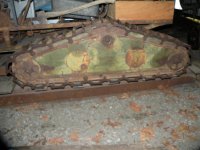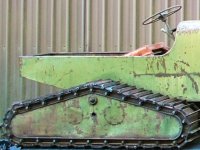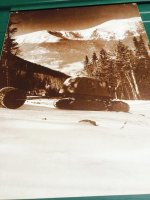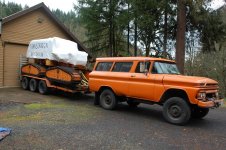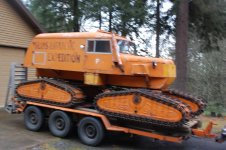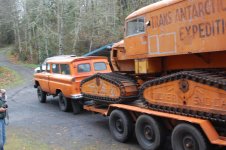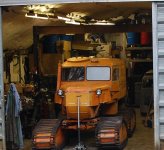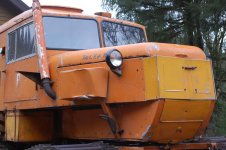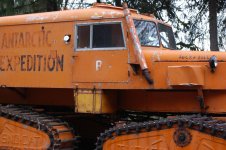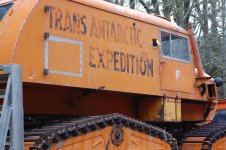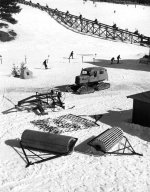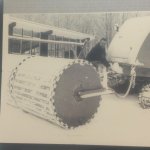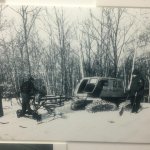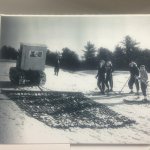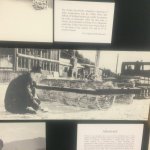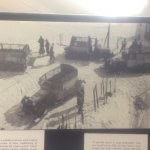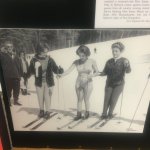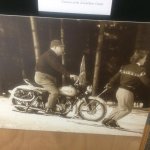Referencing post #13
The red machine on the trailer is one of Tucker's early snow machines that used a spiral drive tube. He sold these machines with the name The Tucker Snow Motor Sled. Tucker gave up this principle in 1938 when he came up with the idea and machine with the pontoons on it.
The track on the left belongs to the famous Rock N Roll freighter which was Sir Vivian Fuchs's personal Sno-Cat that he crossed Antarctica in 1957-1958.
The 424 is one of only four built. It has a steel body. The year of manufacture was 1946.

